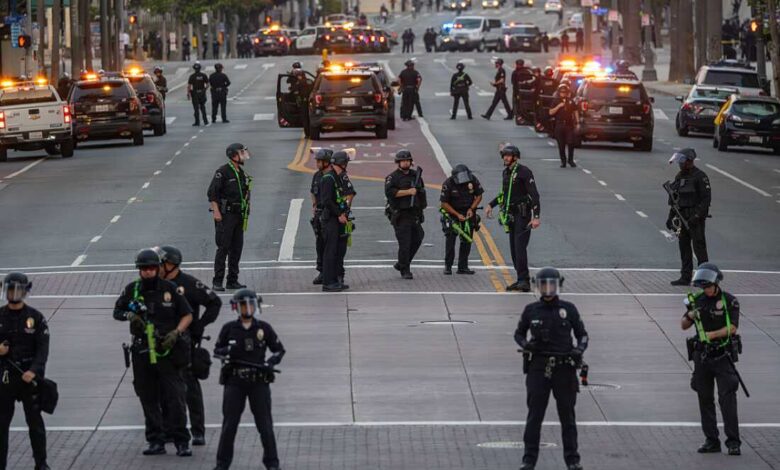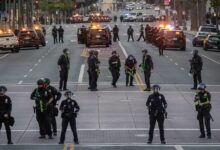DC Protests: A City on the Frontlines of Expression

Washington, DC Protests, is not just the political capital of the United States—it’s also the heartbeat of civic expression. The city has long been the stage for voices from every corner of the country, demanding attention, change, or simply a moment in history. From iconic civil rights marches to modern-day political demonstrations, DC protests have shaped the nation’s narrative in more ways than one. But what makes these protests unique, and why does the city see such frequent and fervent demonstrations? Let’s unpack it.
The Historical Significance of DC Protests
Washington, D.C., has a deep-rooted tradition of public demonstration. The city’s history is littered with movements that have left indelible marks on American society. The civil rights movement, for instance, saw thousands descend upon the National Mall in 1963 during the March on Washington for Jobs and Freedom. It was here that Martin Luther King Jr. delivered his iconic “I Have a Dream” speech—a moment immortalized in history. The DC protests of that era weren’t just about making noise; they were about sending a message to the highest levels of government.
Fast forward a few decades, and you see the anti-Vietnam War protests of the late 1960s and early 1970s. Thousands of young Americans, frustrated and outraged by the war, converged on the city. What set these demonstrations apart wasn’t just their size but their creativity—marches, sit-ins, teach-ins, and even theatrical performances aimed at capturing the attention of lawmakers and the media alike. Washington, D.C., was more than a backdrop; it was a symbolic battleground where public opinion met political power.
Even today, historical echoes resonate in DC protests. Movements for LGBTQ+ rights, women’s rights, and racial justice have continued the tradition. Each protest, while unique in its cause, taps into the city’s long-standing role as the nation’s moral and political compass. The streets of D.C. are more than asphalt—they’re living history, bearing the footprints of countless activists who demanded the country reckon with its values.
Modern DC Protests: Who and What Is Marching Today

Today, DC protests are as diverse as the city itself. No longer confined to a single cause or demographic, they range from small grassroots gatherings to massive, city-wide mobilizations. Black Lives Matter protests, for example, have drawn tens of thousands to D.C. streets in recent years, highlighting systemic racism and police brutality. These protests often combine traditional marches with modern strategies, such as social media campaigns, viral hashtags, and live streaming, amplifying their reach far beyond the National Mall.
Political protests are also a hallmark of contemporary Washington. With the city as the seat of federal power, activists targeting Congress, the White House, and other government institutions are a common sight. Whether it’s environmental activists lobbying for climate action or pro-democracy advocates rallying against policy decisions, D.C. serves as the ultimate stage. The city’s unique position guarantees that the message isn’t just local—it’s national and often international.
Interestingly, DC protests have also become highly performative. Theatrical demonstrations, coordinated flash mobs, and even artistic installations now form part of the protest toolkit. This trend reflects a shift in how activists communicate: it’s no longer just about volume but about visibility, symbolism, and shareability. Modern DC protests are media-savvy, leveraging both traditional and digital channels to ensure their message is seen, discussed, and debated.
The Role of Law Enforcement in DC Protests
One cannot talk about DC protests without addressing the role of law enforcement. The city is unique in that the Metropolitan Police Department works alongside federal agencies like the Secret Service, U.S. Park Police, and Capitol Police, depending on the nature and location of the protest. This multi-agency presence ensures both security and controversy—sometimes in equal measure.
Historically, interactions between law enforcement and protesters have been tense. From the anti-Vietnam War era to the Occupy Wall Street demonstrations, there have been numerous clashes that left lasting impressions on the public psyche. Today, these tensions persist, particularly when protests involve highly polarized political issues. Crowd control, permit requirements, and police tactics all play a role in shaping both the protest experience and public perception.
At the same time, law enforcement in D.C. often walks a fine line. The city has a proud tradition of protecting the right to protest, but security concerns for political leaders and sensitive federal buildings complicate matters. The balancing act is delicate: too much force can spark outrage and media scrutiny, while too little can jeopardize safety. This unique dynamic makes DC protests particularly high-stakes compared to demonstrations in other cities.
The Impact of DC Protests on Policy and Public Opinion
DC protests are more than symbolic—they can change the course of policy. By concentrating activism in the nation’s capital, protesters can put pressure directly on lawmakers and influencers. History offers countless examples: civil rights legislation, anti-war initiatives, and marriage equality advancements all felt the pressure of persistent public demonstrations.
Even when immediate policy shifts don’t occur, DC protests influence public discourse. They attract media coverage, spark debates on social platforms, and shape narratives that can endure for years. Politicians, aware of the optics and public sentiment, often respond in some fashion, even if it’s only rhetorical. In this sense, protests serve as a feedback loop between the government and the governed—a reminder that democracy is, at its core, participatory.
The psychological impact on citizens is equally profound. Seeing thousands of fellow Americans rallying for a cause can galvanize new activists, inspire volunteerism, and foster community solidarity. DC protests aren’t just about legislation; they’re about cultural change, raising awareness, and giving ordinary people a sense of agency in shaping their country’s future.
Challenges Facing DC Protests Today
Despite their significance, DC protests face modern challenges. Security concerns post-9/11, heightened political polarization, and logistical hurdles like permitting and city ordinances all complicate planning. Additionally, protests now exist in a digital ecosystem where online harassment, misinformation, and surveillance can undermine activist efforts.
Moreover, sustaining momentum is difficult. Modern movements often face “protest fatigue,” where repeated demonstrations fail to generate the same media attention or public engagement. Activists have to innovate constantly—adopting new strategies, coordinating with allied groups, and maintaining visibility both online and offline.
Finally, there’s the issue of accessibility. Not everyone can travel to D.C. for a demonstration, which can create a disconnect between local activists and nationwide supporters. Hybrid models, combining on-the-ground presence with digital participation, are becoming essential, but they bring their own set of logistical and technological challenges.
Why DC Remains the Symbolic Heart of Protest
Ultimately, the enduring significance of DC protests lies in symbolism. The city embodies the intersection of power and policy. Marching on Pennsylvania Avenue, gathering on the National Mall, or rallying in front of the Capitol carries weight that no other city can replicate. It’s a statement: the eyes of the nation are watching, and change is demanded at the very seat of authority.
This symbolism is magnified by the city’s history. Every protest connects to a lineage of activism stretching back decades, creating a sense of continuity and legitimacy. In Washington, D.C., protests are not just events—they’re chapters in a living story of democracy in action. And as long as there are causes that demand attention, DC will remain the epicenter of public expression.
Conclusion
DC protests are more than demonstrations—they are a vital thread in the fabric of American democracy. From historical movements that reshaped the nation to modern protests leveraging digital tools and social media, Washington, D.C., has always been a city where voices are amplified. Challenges exist, but the spirit of protest persists, reminding us that civic engagement is a cornerstone of freedom. In D.C., every march, rally, and gathering is a testament to the enduring power of the people.
